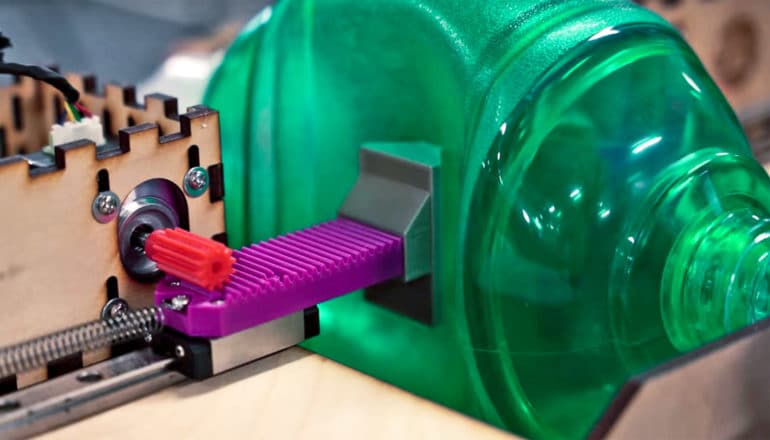
Just $300 worth of parts can come together to create a kind of ventilator, report researchers.
They have developed an automated bag valve mask ventilation unit to help patients in treatment for COVID-19. The collaboration expects to share the plans for the ventilator by making them freely available online to anyone in the world.
“This is as simple as it can get, with all readily available parts.”
Faculty and students at Rice University went into overdrive several weeks ago when requests began pouring into the university seeking plans for an early prototype developed in 2019 by engineering seniors.
That team, which called itself Take a Breather, designed and built a programmable device able to squeeze a bag valve mask. Emergency medical personnel typically carry these masks to help get air into the lungs of people having difficulty breathing on their own. But the masks are difficult to squeeze by hand for more than a few minutes at a time.
Rohith Malya, an assistant professor of emergency medicine at Baylor College of Medicine, an adjunct assistant professor of bioengineering at Rice, and associate of the Rice 360° Institute for Global Health and a principal at Metric Technologies, recognized the need to automate the masks not only for emergencies where hospital ventilators are in short supply but also for developing nations where such equipment is not available at all.
The first criterion certainly applies now, with a global shortage of ventilators threatening the population as the novel coronavirus spreads.
A team gathered to see how quickly they could develop a more robust prototype built primarily of 3D-printed and laser-cut parts. Their solution, designed and prototyped within a week, is a reconfiguration of the original rack-and-pinion device and designed to be not only medical grade, but also inexpensive enough to be considered disposable.
The small team worked in the Brown School of Engineering’s Oshman Engineering Design Kitchen (OEDK), where the original project came together last spring. With students hunkered down and taking their classes online, the facility provided a quiet refuge for the ApolloBVM team as it worked around the clock to build the device.
The Department of Defense is one of the groups interested in ApolloBVM. The US Navy invited several institutions to submit proposals to develop a low-cost, mechanical ventilation support system that can be rapidly produced with widely available resources.
“This is as simple as it can get, with all readily available parts,” says Danny Blacker, the OEDK’s engineering design supervisor.
The prototype uses an Arduino board to facilitate programming that allows users to adjust the rate of air delivery to the lungs of patients depending on their conditions, but the team expects a custom integrated circuit will eventually be available to replace the board at a lower cost. The device will also employ feedback sensors that help fine-tune the flow of air to the lungs, as well as motors of the same type that power 3D printers for hours on end.
Malya inspired the Rice project two years ago after seeing families try to keep critically ill loved ones at the Kwai River Christian Hospital in Thailand alive by bag-ventilating them for hours on end. He expects the new ApolloBVM to serve that purpose eventually, but the need is now worldwide.
“This is a clinician-informed end-to-end design that repurposes the existing BVM global inventory toward widespread and safe access to mechanical ventilation,” Malya says, noting that more than 100 million bag valve masks are manufactured around the world each year.
“The immediate goal is a device that works well enough to keep noncritical COVID-19 patients stable and frees up larger ventilators for more critical patients,” adds Amy Kavalewitz, executive director of the OEDK.
Up-to-date details about the project, dubbed the ApolloBVM, and its progress are available here: http://oedk.rice.edu/apollobvm/
Source: Rice University
The post Team builds ventilators from $300 worth of parts appeared first on Futurity.
from Futurity https://ift.tt/3bCDbeZ
No comments:
Post a Comment